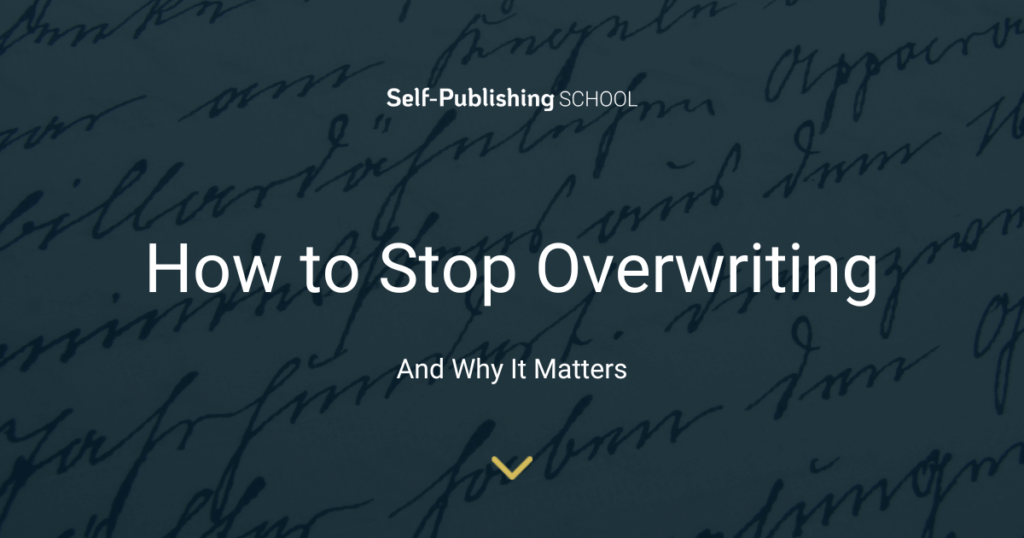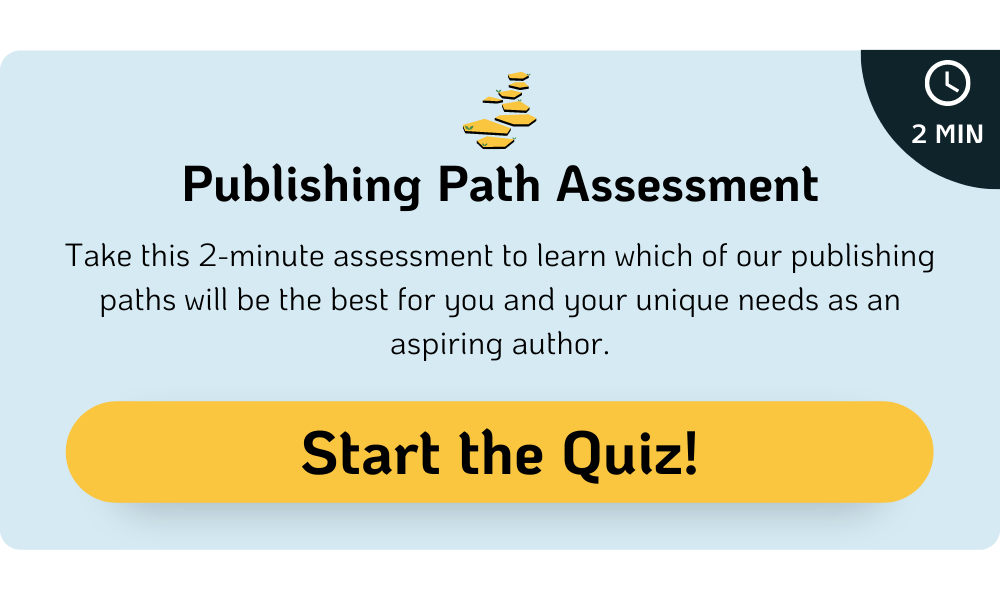Generally speaking, there are two types of writers: overwriters and underwriters.
If you’re an underwriter (not the insurance type), you’ve probably had editors, beta readers, and professors tell you that you need to flesh out your characters, add some padding to your transitions, and add some description and dimension to your scenes.
But maybe you’ve heard the opposite—that you’re an overwriter, and your work is overwritten. What does that mean? How do you fix that? And how do you avoid overwriting in the future?
In this article, we’re here to talk about:
- What is overwriting?
- What does it mean if a book is overwritten?
- Why is overwriting bad?
- Examples of overwriting
- How to stop overwriting
What is overwriting?
Simply put, overwriting is when a piece of writing has too much going on. This might mean that there are too many plot threads, which make the story confusing to follow, or there might be a bunch of scenes that don’t contribute to the main plot. This might also mean that the prose itself is too wordy or overly descriptive.
Overwriting vs purple prose
You may have also heard the term ‘purple prose,’ and if you have, this might all be sounding familiar. What’s the difference between overwriting and purple prose?
Purple prose is when an author uses excessive or over-the-top language which pulls the reader out of the book. In other words, it draws attention to itself instead of drawing attention to the details it means to describe. Purple prose doesn’t necessarily have to be wordy, but it often is.
For example: “Her emerald eyes glistened with effervescent tears which trembled along her translucent cheek.”
The adjectives used here are over the top in a way that makes us more focused on the bad writing than the action at hand. Another indicator for purple prose is meaningless phrases—what does ‘effervescent tears’ mean, anyway?
Purple prose is usually a form of overwriting. The writer is doing too much and needs to reign it in. Not all overwriting is, necessarily, purple prose, but most purple prose is overwriting.

What does it mean if a book is overwritten?
Here are a few signs that a book might be overwritten:
There are superfluous scenes or characters
Everything in your book should point toward the plot, themes, and goals of the main character. This doesn’t mean there won’t be breaks or asides, but it does mean that you shouldn’t have scenes that don’t matter.
Scenes should always do something to change the status quo. In an overwritten book, you might find a lot of scenes that change nothing. You could delete the entire scene, and very little or nothing at all would change for the story as a whole.
Overwritten books also might include redundant characters. How do you know if a character is redundant? It’s the same trick we used with scenes. If you could delete the character and it would have no major impact on the story, the character is probably redundant.
- Related: Character Development
- Related: Supporting Characters
The prose itself is too wordy or forced
Overwriting can also show itself in prose. If sentences seem like they go on forever, or if descriptions often feel forced and excessive, you’ve probably got overwriting on your hands. This might come in the form of purple prose, but it might also come in the form of too much. The descriptions might be written nicely, but having way too many of them is still overwriting.
Overwritten passages often don’t know what to focus on when it comes time to describe something, so they describe everything, all the time, ad nauseum. And while there’s a certain amount of leniency given when it comes to style—some authors write more length descriptions than others—an overwritten passage will feel unfocused and boring.
It’s difficult to get through
Have you ever found yourself unable to finish a book because you just didn’t feel like you could get through it? No matter how hard you tried to focus, it felt like a slog—-the plot wasn’t going anywhere, the descriptions were nice but there were so many of them, and you just couldn’t pay attention the whole way through?
This is a sign that a book is overwritten.
It’s worth noting, again, that some of this chalks up to personal preference. Some people hail Lord of the Rings as the best book ever written, while others just didn’t like how long and descriptive it was. Fantasy, in particular, tends to trend on the more descriptive side in the name of worldbuilding.
Some readers will love it, and others won’t. But if readers within your genre are telling you it’s too much, you should listen to them.
Why is overwriting bad?
If overwriting can be chalked up to style, then why worry about it?
Overwriting hides your story
Remember what I said earlier about the sludge? Overwriting obscures your story, your plot, and your characters. It takes the reader out of what’s going on and forces them to sift through a ton of content (which ultimately doesn’t have any bearing on the story) to get to what you’re trying to say.
In other words, overwriting will waste a reader’s time.
Your meaning gets obscured line-to-line
If your overwriting tends to show itself more in the prose itself, rather than in excessive plot points, you’ll face the same issue. It’s difficult to sort out what an author means when the sentences are too long and too difficult to follow. If this problem continues throughout the book, it means the reader will have a hard time knowing what the book is about, what’s going on, and why they should care.
Examples of overwriting
I’ve written a few examples here to show you what overwriting might look like in the flesh:
Example 1 (Too Much Description):
“He knew what he had to do. The divorce papers on the kitchen table waited for his signature. The air still smelled like lasagna, which his wife had made for dinner. There was just a hint too much oregano, but overall, it smelled good. He’d enjoyed it, and they’d put the leftovers in the fridge to eat throughout the week. It was always a hassle to go down the hall at his office and use the microwave, but he didn’t really mind. Besides, it was a great chance to catch up with his coworkers, who he liked. He carefully stepped across the kitchen in his shoes, which were his least favorite running shoes—he bought them at Target and they always wore out after a few months, but he liked the way they looked.”
The issue here is that the description takes us away from the scene to exposit about this man’s life. We have to slog through it to get what we want, which is to find out whether he signs the papers.
Example 2 (Tired, Flowery Description, aka Purple Prose)
“He knew what he had to do. Destined, perhaps, by fate, architectured by a cruel god of love with an evil streak of vengeance lurking in its heart. The divorce papers loomed surreptitiously on the deep mahogany table. The auburn streaks in the mahogany gleamed ceremoniously in the gorgeous sunset. His every faltering step shuddered on the rug as he cautiously approached.”
Here, we have a lot of descriptions riddled with cliche, as well as some meaningless descriptions (‘surreptitiously’ doesn’t even make sense here). Instead of wondering what’s going on with the divorce papers, we’re wondering what’s going on with the adjectives and adverbs in this piece.
How to stop overwriting
Outline your novel and scenes
Overwriting might stem from not knowing where your story is going, especially if you tend to have lots of dropped plot threads or redundant characters. A great way to prevent this? Outline! Having an idea of where you’re going will make it much easier to steer there.
It can also help to outline each scene, especially in revisions, to make sure the scene is essential. What’s the goal of the scene? How is the status quo changed? How are the stakes raised? Again, this will help you know what to spend your time on while you’re writing.
Condense minor characters and subplots
If you have a ton of subplots and a cast of thirty characters, you might find it helpful to condense them.
If you have a character, for example, who really only does one or two things, and another character who only does one thing, make them one character. Now that character has a ton of responsibility, and they’re vital to the story! Hurray!
If you have a ton of subplots, cut any of them that get dropped or which don’t resolve (or make them essential in revisions). You can condense these, too—maybe instead of having a scene where two characters flirt with each other and a separate scene where they rob a bank, maybe they rob a bank and flirt with each other the whole time. Combining the romance subplot and the robbing-a-bank plot will make both of them more interesting, and it’ll cut your word count.
Side note: exposition is a common overwriting pitfall for specifically fantasy authors, and this hack works wonders for exposition. Instead of having someone stop the plot dead to explain a piece of worldbuilding, incorporate that worldbuilding into a conversation with real stakes—or else, find a way to make the exposition interesting, so the reader isn’t bored.
Describe what matters
Lengthy descriptions can be lovely, but they need to be intentional. Pay attention to what you describe, and have a good reason for describing it. If we get a super detailed description of everything in the story, nothing’s going to stick out to the reader.
Take, for example, this scene from Shrek: Shrek and Donkey walk into the dragon’s lair. We see a lingering shot of the chandelier positioned just over the dragon’s head, which helps us remember the chandelier when later, it’s used to capture the dragon.
If this scene were written down and every single thing in the room were given the same weight, we wouldn’t remember the chandelier. Later, when the chandelier is used to capture the dragon, we wouldn’t feel satisfied—we would feel like it was random.
Overwrite all you want… for your first draft
Last but not least—if you find that you’re getting stuck on your first draft because you’re worried about overwriting, I’m giving you permission to release that fear and write your first draft as lengthy and excessively as you need.
It is important to improve, and you will, when it comes time to revise. But for your first draft, set aside your concerns and write the story all the way through, however it comes out, with your primary focus being finishing the darn thing. Getting too hung up on making sure you’re perfectly resolving every plot thread and making every character essential will make a draft more frustrating than exciting.
Remember: fixing overwriting is ultimately just trimming what you already have. If you have a whole lot when you’ve finished your first draft, that’s okay! Just be prepared to do some chopping.
